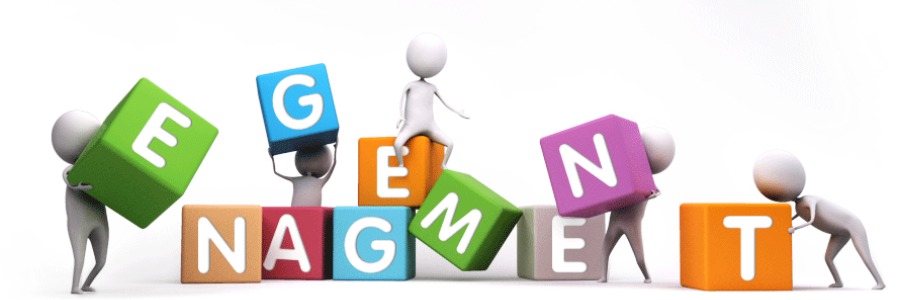Engaged Employee Programme
What is employee engagement?
Employee engagement is the synchronisation of the company’s staff members with the combined company objectives. It is important not to confuse engagement with satisfaction. Employees can still be satisfied without fully understanding and embracing the core competency of the company, thus affecting your success. Employee engagement is indicated by the employee’s commitment, what they do in their quieter times and ultimately the amount of effort they exert on productive undertakings.
There are 3 types of employees:
-
Engaged → Motivated and committed employees who work efficiently and effectively and are proud of their output. They emanate confidence and set examples for their colleagues.
-
Not Engaged → Employees who struggle to identify with the company and lack passion or drive.
-
Actively Disengaged → Detached employees who actively seek colleagues with the same mentality to console in. These employees lower the office morale.
Why is employee engagement critical to an organisation?
An organisation’s survival and performance is based on the organisation’s employees. Your employees are the essence of your company and are most commonly your clients first touch point. To put it simply; employee engagement is crucial to your success.
The link between engagement and profit:
⇒ Engaged employees are more loyal
⇒ Such loyalty from valuable employees encourages customer satisfaction
⇒ Satisfied customers are loyal
⇒ Loyal customers result in profits
⇒ Profits result in increased shareholder worth
What is an employee engagement programme?
An employee engagement programme is commonly a recognition and reward programme that aims to redirect current employee behaviours and output to better meet the company’s desired outcomes and successes. The most common programmes are nomination, performance or achievement based. The programme uses a set of guidelines to encourage, restructure and reinforce the desired behaviours which lead to achieving objectives, staff retention, displaying the core values, minimising costs and profit creation. More than one employee programme can run at the same time but should ideally all be combined into one central programme.
How do you design an employee engagement programme?
Any programme takes some planning – the first step is to realise where you, your company and your employees stand today and where you would like to be in the future. Secondly, you need to synchronise your objectives, targets, staff, technologies and rewards into a concise solution. You need one programme that speaks to all your employees and rewards that entice everyone equally.
Types of programmes:
-
Peer to peer and team awards
-
Long service awards
-
Annual awards
-
Sales and performance awards
Engagement may be determined based on:
-
Performance
-
Client service and satisfaction
-
Employee recommendations
-
Years of service
-
Innovation and initiative
-
Going above and beyond
-
Safety
-
Procedure enhancement
How do you measure an employee engagement programme?
There are various methods to measure employee engagement including quantitative, qualitative and operational metrics to evaluate their commitment to the company. The metrics you choose should be based on the objectives you are trying to achieve, for example, if you want to measure targets reached you can measure sales, but if you want to measure client service you will need to encourage and evaluate client feedback or peer recommendations.
Quantitative data can be used to show the success of the rewards programme, for example by evaluating data such as staff attendance, client preservation, and employee retention, the level of engagement can be determined. Another indicator is to use the quantitative data derived before a programme and compare it to the data derived after a programme – the variation amongst the 2 results will indicate a change in employee engagement levels and the success of the programme.
Qualitative data provides an understanding of the point of engagement from employees. The different ways to gain qualitative data is the use of focus groups, surveys, group discussions, one-on-one interviews, performance appraisals, etc. The process is then the same as the use of quantitative – were pre and post programme data need to be analysed to determine the success of the programme.
Operational data is derived from the day to day operations undertaken by employees, such as the capabilities to use technological podiums, customer service feedback or reports, redemption reports, participation reports, etc. When using operational data teamed with the qualitative and quantitative data the overall uptake of the programme and influence on employee engagement/performance can be determined.
What does an employee engagement programme cost?
The investment you make in the programme depends on various factors such as when the programme was launched, whether it was properly launched to ensure excitement and uptake was maximised, the type of communications that were used and their regularity, the number of people in the company assisting in the campaign administration, the company culture, and the intricacy of the guidelines and procedures used in the programme. If implemented, driven and managed correctly the programme will pay for itself; in that increased employee performance and engagement will result in improved company achievements, successes and ultimately finances. Engaged employees increase their employment value, as well as work harder and smarter on a day-to-day basis.
Tags: Employee Rewards, Reward and Recognition , Staff Incentive, Employee Engagement, Employee Motivation, Rewards Fulfilment

